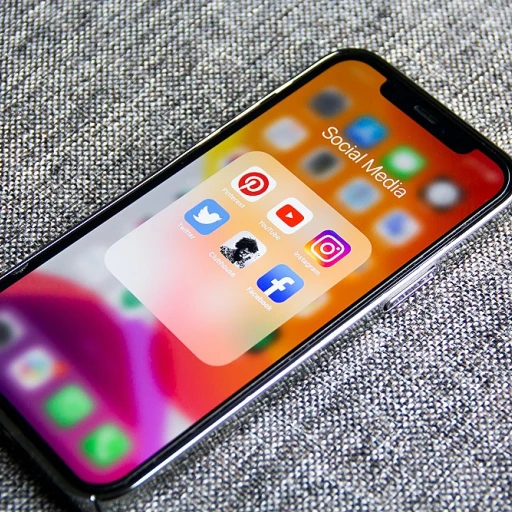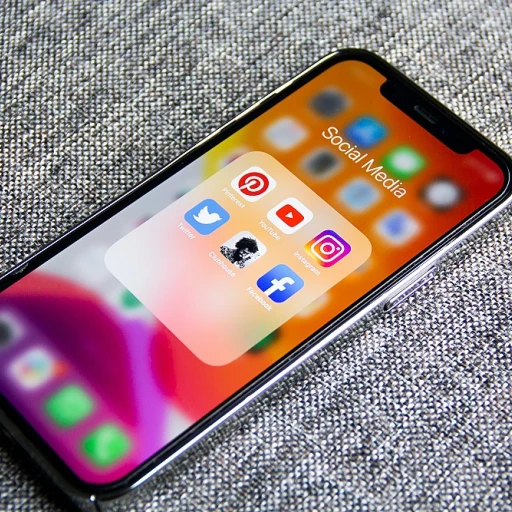Understanding Influencer Marketing Dynamics
Decoding the Mechanics of Influencer Marketing
In the vast landscape of modern marketing, influencer strategies have emerged as a compelling avenue for brands aiming to expand their audience reach. These strategies pivot on leveraging the sway and credibility of influencers, who command a dedicated community of followers across various social media platforms. This dynamic form of marketing encompasses both paid and organic approaches, each offering distinct advantages and challenges.
At its core, influencer marketing endeavors to craft engaging content that resonates well with the target audience. Brands strategically partner with creators to amplify their messaging, often in the form of organic posts or paid ads. The allure of organic reach, derived from authentic endorsements, is juxtaposed against strategic paid usage that ensures measurable impact through calculated exposure.
Influencers act as intermediaries who can align brand messages with authentic lifestyles, nurturing trust and connection with their followers. Brands must remain mindful of usage rights regarding influencer-generated content—protecting the integrity and originality of shared posts is crucial in enforcing an effective media strategy.
To navigate these multifaceted dynamics, it's essential for brands to weigh the trade-offs between organic social and paid media efforts. Furthermore, the integration of technologies such as AI and SEO plays a vital role in refining and optimizing these strategies, empowering brands to make data-driven decisions that maximize influence and generate authentic engagement.
AI's Role in Optimizing Influencer Strategies
AI-Powered Insights for Enhanced Influencer Campaigns
Artificial Intelligence (AI) is reshaping how brands approach influencer marketing. By leveraging AI's analytical capabilities and data-driven insights, companies can better understand and optimize their influencer strategies. Here’s how AI is elevating the influencer marketing landscape:- Audience Analysis: AI tools can analyze vast amounts of data to provide in-depth insights into influencer audience demographics. By understanding an influencer's follower base, brands can ensure their content reaches the desired target audience, increasing the chances of successful engagement.
- Content Strategy Optimization: AI-driven platforms help in identifying the types of content that resonate most with audiences. This allows brands to tailor their influencer content to match the interests and preferences of potential customers, enhancing the organic reach of posts.
- Performance Metrics: AI analyzes post-performance to gauge what strategies yield the best results concerning influencer marketing. By understanding key performance indicators, such as engagement rates and return on investment (ROI), brands can distinguish between effective and underperforming media strategies.
- Finding the Right Influencer: With AI, identifying influencers whose style and audience align with a brand becomes more precise. This focused approach helps in selecting creators who can authentically promote the brand, resulting in more genuine organic social interactions.
- Managing Usage Rights: AI simplifies the complexities of managing paid usage rights, ensuring that brands can effectively leverage influencer content across multiple paid media platforms without legal complications.
Paid Influencer Marketing: Pros and Cons
Advantages and Disadvantages of Investing in Sponsored Influencer Initiatives
The utilization of influencers in marketing strategies has sky-rocketed due to their ability to engage audiences authentically. However, investing in paid influencer strategies comes with its fair share of benefits and drawbacks. One distinct advantage is the precise targeting of a brand's ideal audience. Paid strategies allow brands to leverage an influencer's follower demographic data, ensuring their message reaches exactly who they aim to engage. This kind of targeting is critical for maximizing reach and optimizing media strategy. Furthermore, paid initiatives provide significant control over the content. Brands often enjoy the rights to approve posts, seeing that influencers create material that aligns with their brand values and broader marketing objectives. Such usage rights ensure consistency in messaging across platforms. However, the cost associated with paid social initiatives can be a considerable disadvantage. The financial commitment to paid advertising may not suit every brand, especially when balancing between organic and paid media strategies is crucial. There's also the challenge of content saturation; audiences might tire from the overwhelming presence of promotional influencer posts, potentially diminishing both organic reach and audience engagement. Moreover, reliance on paid tactics might lead to dependency on the influencer's followers, risking the overshadowing of a brand's organic efforts. It's essential to have a balance, for too much focus on paid can undermine natural relationships that brands have cultivated through organic social interactions. To navigate these challenges and benefits, a carefully crafted media strategy that utilizes AI can optimize the balance between paid and organic initiatives, ensuring both efficiency and authenticity in influencer collaborations. For more comprehensive insights into how AI can shape these strategies and enhance data privacy in SEO, refer to this source.Organic Influencer Marketing: Pros and Cons
Exploring the Advantages and Drawbacks of Organic Influencer Campaigns
Organic influencer marketing, as a part of the broader influencer dynamics, leverages content without the exchange of monetary compensation. This means that organic social strategies rely heavily on genuine brand-influencer relationships, leading to authentic and engaging interactions with audiences. For brands and creators, understanding the nuances of organic influencer content will play a pivotal role in shaping outreach strategies.- Authenticity: Organic social media posts are perceived as more authentic by followers, increasing trust and engagement. Since there's no direct payment involved, the message often feels genuine and relatable, fostering a deeper connection with the brand.
- Cost-Effectiveness: Without the costs associated with paid ads, brands can connect with target audiences without a detached media strategy. This can significantly benefit smaller brands with limited budgets, allowing them to maximize organic reach.
- Long-Term Relationship Building: Establishing organic influencer partnerships can lead to sustainable collaborations, creating consistent exposure to influencer followers and enhancing brand loyalty over time.
- Limited Control: Unlike paid strategies, where brands often have greater control over messaging, organic posts depend on the influencer’s creative portrayal. This highlights the importance of choosing creators whose values align with the brand's vision.
- Unpredictable Reach: While organic engagement can sometimes surpass the reach of paid media, it's inherently unpredictable and can vary vastly based on factors like changes in social media algorithms.
Balancing Paid and Organic Strategies with AI
Finding the Right Balance with AI
In the evolving landscape of influencer marketing, brands are increasingly leveraging Artificial Intelligence (AI) to harmonize paid and organic strategies. The integration of AI tools can significantly assist in making data-driven decisions regarding content selection, timing, and audience targeting, thereby increasing overall efficiency and effectiveness. AI algorithms offer detailed insights into the performance metrics of both paid and organic content. By analyzing trends and usage patterns, AI can help refine a brand's media strategy. AI's ability to predict which influencer content will resonate most with specific audience segments empowers brands to optimize their paid and organic social efforts.- Content Precision: Through AI analysis, brands gain the ability to identify which organic posts are likely to engage audiences effectively, potentially reducing reliance on paid ads while enhancing organic reach.
- Dynamic Allocation: AI offers flexibility by allowing brands to dynamically shift between paid and organic tactics based on real-time performance data. This adaptive approach maximizes reach and audience engagement.
- Enhanced Targeting: AI-driven insights enable precise targeting of influencer followers, ensuring that both paid and organic media reach the intended audience efficiently.
Future Trends in AI and Influencer Marketing
Emerging Technologies and Their Influence
The future of influencer marketing is poised for transformation with advancements in artificial intelligence. As AI continues to evolve, its capabilities in analyzing vast amounts of data will become more sophisticated. This will enable brands to refine their media strategy, ensuring that both paid and organic content reach the right audience more effectively. The ability to predict trends and consumer behavior will allow brands to tailor their influencer content to maximize engagement and ROI.
AI-Driven Personalization
AI's role in personalizing influencer marketing strategies cannot be overstated. By leveraging AI, brands can create highly personalized experiences for their target audience. This involves analyzing influencers' followers to understand their preferences and crafting content that resonates with them. The result is a more authentic connection between the brand and its audience, whether through organic posts or paid ads.
Enhanced Measurement and Analytics
As AI tools become more advanced, they will provide brands with deeper insights into the performance of their influencer marketing campaigns. This includes tracking the organic reach of posts, the effectiveness of paid advertising, and the overall impact on brand awareness. With these insights, brands can adjust their strategies in real-time, optimizing both paid and organic social media efforts to achieve their marketing goals.
Ethical Considerations and Transparency
With the increased usage of AI in influencer marketing, ethical considerations will become more prominent. Brands must navigate the complexities of usage rights, ensuring that the generated content respects both the influencers' and the audience's rights. Transparency in how AI is used to shape marketing strategies will be crucial in maintaining trust with consumers.
Integrating AI with Human Creativity
While AI offers numerous advantages in optimizing influencer marketing, the human touch remains irreplaceable. The future will likely see a blend of AI-driven insights with human creativity, where influencers and brands collaborate to produce content that is both data-informed and creatively engaging. This synergy will help brands maintain authenticity while leveraging the efficiency of AI.













